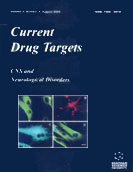Abstract
One of the conundrums of neuropharmacology is to understand the therapeutic mechanisms of action of antipsychotic drugs. Every drug with antipsychotic activity is a dopamine (DA) D2-like receptor antagonist and therefore this function is critical to reducing psychotic symptoms. However, the actions of the archetypal atypical antipsychotic drug clozapine go beyond antipsychotic effects because the drug is efficacious in treating psychotic symptoms that do not respond to drugs mainly directed at antagonizing the DA D2 receptor, has benefits in cognition and has recently been shown to reduce levels of suicide. A growing understanding of the mechanisms of clozapine and other atypical antipsychotic drugs suggests that both partial and inverse agonism, as well as receptor antagonism, at specific neurotransmitter receptors is required to give full therapeutic benefits. It is, therefore, timely to review the evolving nature of the mechanisms of action of different antipsychotic drugs.
Keywords: antipsychotic drugs, receptor antagonist, clozapine, psychotic symptoms, da d2 receptor
 4
4

















